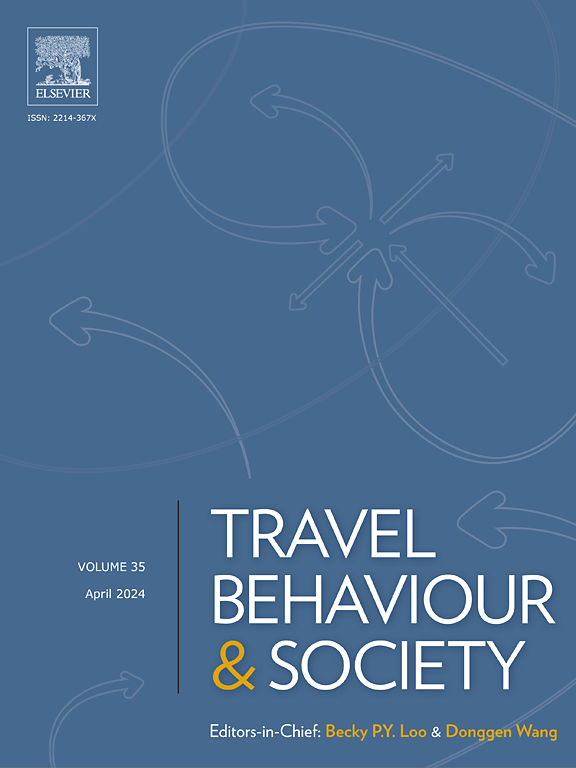15分钟城市重访:通过邻近和公共交通供应来测量、可视化和分析可达性的GIS方法
IF 5.7
2区 工程技术
Q1 TRANSPORTATION
引用次数: 0
摘要
如果选择适当的理论和方法,15分钟城市可以为衡量和分析基本城市功能的可达性提供一个有意义的框架。本文开发了一种综合的方法,并介绍了使用地理信息系统(GIS)测量、可视化和分析x分钟可达性(步行可达性)和公共交通供应可达性(附近公共交通服务创造的可达性潜力)的步骤。本文提出了五个步骤:项目定义、数据准备、可达性测量、可达性和可达性可视化、利用空间统计分析和建模分析可达性。提议的方法适用于哥本哈根会议。结果表明,即使在可持续流动性显著的城市,也存在以城郊区位为主的可达性缺失和不足空间集群;基于邻近的可达性和公共交通供应的可达性在空间上高度重叠。此外,密度在很大程度上可以预测到当地目的地的15分钟步行可达性和通过公共交通到达其他地区的可达性。这种方法可以作为那些旨在理解空间可达性模式和驱动因素、揭示社会空间不平等、确定改善步行可达性和减少对汽车依赖的潜在干预措施的地点的指南。本文章由计算机程序翻译,如有差异,请以英文原文为准。
The 15-minute city revisited: A GIS approach to measuring, visualizing, and analyzing accessibility by proximity and by public transport supply
The 15-minute city can offer a meaningful framework for measuring and analyzing accessibility to basic urban functions, if proper theoretical and methodological choices are made. This paper develops a comprehensive methodology and presents the steps for measuring, visualizing, and analyzing x-minute accessibility by proximity (walking accessibility) and accessibility by public transport supply (accessibility potential created by nearby public transport services) using geographic information systems (GIS). Five sequential steps are presented: project definition, data preparation, measuring accessibility, visualizing accessibility and insufficient accessibility, and analyzing accessibility using spatial statistical analysis and modeling. The proposed approach is applied to Copenhagen. Results indicate that, even in a city where sustainable mobility is prominent, there are spatial clusters of lack of accessibility and insufficient accessibility, lying mainly in suburban locations. Proximity-based accessibility and accessibility by public transport supply are found to highly overlap across space. Moreover, density was found to largely predict both 15-minute walking accessibility to local destinations and accessibility to other areas via public transport. This approach can be used as a guide by those aiming to understand the patterns and drivers of accessibility across space, reveal socio-spatial inequalities, and identify locations for potential interventions that improve walking accessibility and reduce car dependence.
求助全文
通过发布文献求助,成功后即可免费获取论文全文。
去求助
来源期刊

Travel Behaviour and Society
TRANSPORTATION-
CiteScore
9.80
自引率
7.70%
发文量
109
期刊介绍:
Travel Behaviour and Society is an interdisciplinary journal publishing high-quality original papers which report leading edge research in theories, methodologies and applications concerning transportation issues and challenges which involve the social and spatial dimensions. In particular, it provides a discussion forum for major research in travel behaviour, transportation infrastructure, transportation and environmental issues, mobility and social sustainability, transportation geographic information systems (TGIS), transportation and quality of life, transportation data collection and analysis, etc.
 求助内容:
求助内容: 应助结果提醒方式:
应助结果提醒方式:


